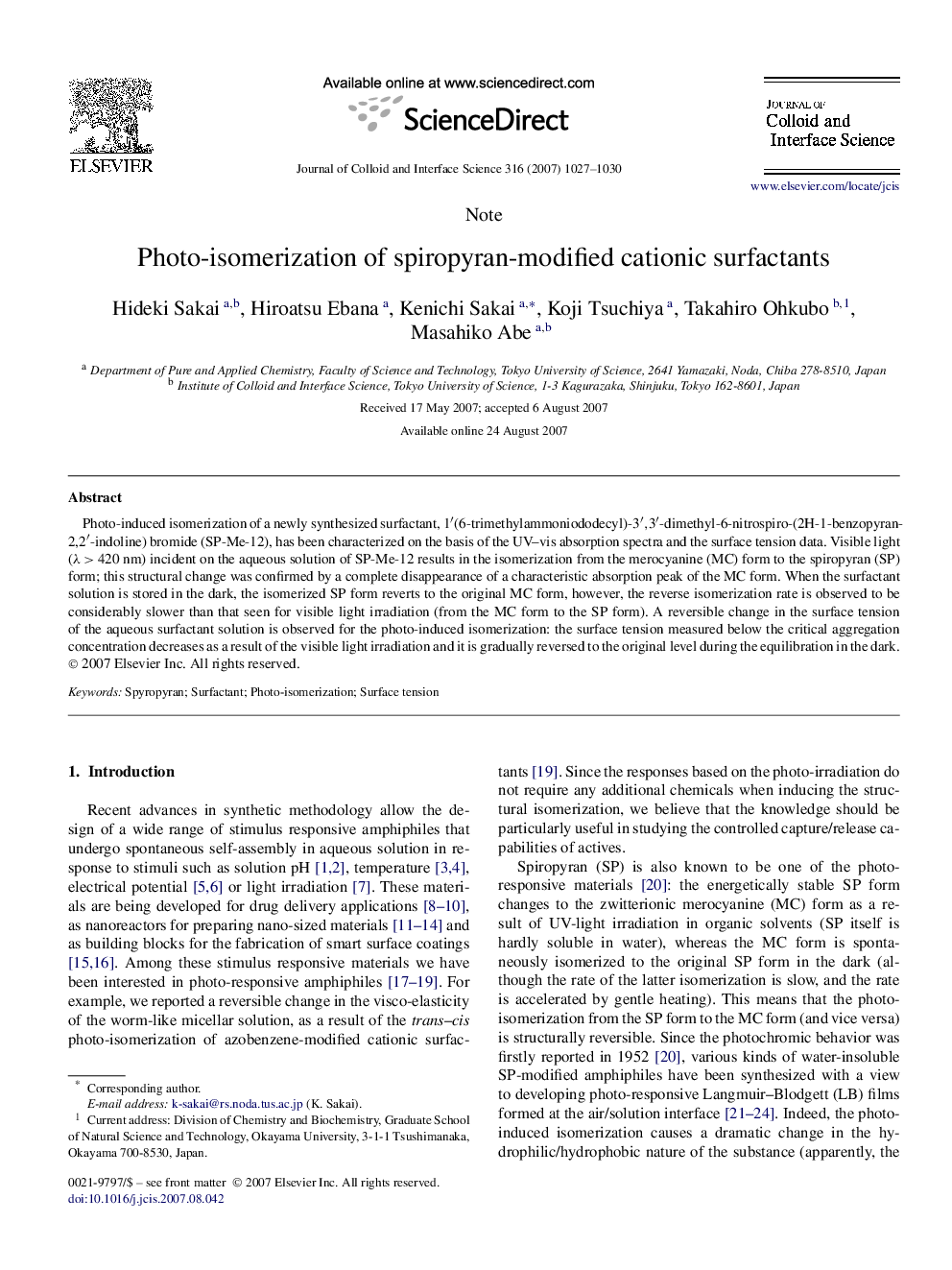| Article ID | Journal | Published Year | Pages | File Type |
|---|---|---|---|---|
| 612095 | Journal of Colloid and Interface Science | 2007 | 4 Pages |
Photo-induced isomerization of a newly synthesized surfactant, 1′(6-trimethylammoniododecyl)-3′,3′3′,3′-dimethyl-6-nitrospiro-(2H-1-benzopyran-2,2′-indoline) bromide (SP-Me-12), has been characterized on the basis of the UV–vis absorption spectra and the surface tension data. Visible light (λ>420 nmλ>420 nm) incident on the aqueous solution of SP-Me-12 results in the isomerization from the merocyanine (MC) form to the spiropyran (SP) form; this structural change was confirmed by a complete disappearance of a characteristic absorption peak of the MC form. When the surfactant solution is stored in the dark, the isomerized SP form reverts to the original MC form, however, the reverse isomerization rate is observed to be considerably slower than that seen for visible light irradiation (from the MC form to the SP form). A reversible change in the surface tension of the aqueous surfactant solution is observed for the photo-induced isomerization: the surface tension measured below the critical aggregation concentration decreases as a result of the visible light irradiation and it is gradually reversed to the original level during the equilibration in the dark.
Graphical abstractThe photo-induced isomerization of a spiropyran-modified cationic surfactant has been characterized with a combination of the UV–vis absorption spectroscopy and surface tensiometry.Figure optionsDownload full-size imageDownload as PowerPoint slide
